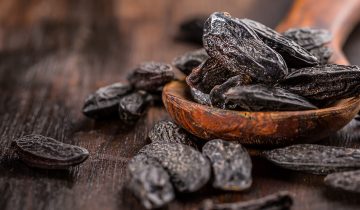Written by Nathan Kim
Edited by CHIQIO
Keywords: olfactory imagery, sensory engagement, descriptive language, memory encoding, writing techniques
There’s many ways to describe something through words. One can bring up specific parts of a scene, using descriptive words, in order for the readers to be able to draw a vivid image in their head. There’s ways to describe the atmosphere of the scene by labeling it with a certain sound, so that readers can better associate with what the text is describing. As such, evoking sensory imagery is an effective way to keep the audience engaged, and become potentially interested in what the text is describing, and depending on what the text is trying to conjure, a specific type of scent may be more effective to touch on.
What is Olfactory Imagery?
Olfactory imagery is a literary technique that evokes the reader’s sense of smell. Obviously, text cannot deliver scent to the audience directly. So, the writer utilizes a careful choice of words to create a generic image that most people would usually associate with a certain type of scent. For example, most people would associate a mother’s cookie with a warm, sweet, and pleasant smell, while a trip to the dentist would evoke a sharp, chemical, unpleasant smell. Perhaps this phenomenon has less to do with how each object/location actually smells, but rather about how an individual encodes, and remembers it as. A mother is typically the one figure that children rely on, always embracing with warmth. This pre encoded idea mixed with the scent of cookies, which, also is generally conceived as a positive object to children, creates an olfactory image of security, warmth, and reminiscence of the reader’s childhood.
How can I utilize Olfactory Imagery?
Like all other writing methods that utilize imagery, olfactory imagery requires a lot of experience and training. It’s important that you know what words to use to evoke specific scents; sometimes a wrong word could completely alter the imagery that’s being delivered to the reader. The easiest way to increase your scent vocabulary is to start writing down what a ‘good’ and ‘bad’ scent is to you and your friends. Finding common words may bring a better understanding of what a positive and negative odor represents in a person’s head. Then, start drawing specific categories, such as sweet, fresh, wet, dry, fruity, and so on. You’ll be armed with an arsenal of words to use in no time. Make sure to use descriptive words that can touch upon a specific scent in the mind, such as ‘dewey forests in the early morning’ instead of using generic words like ‘good’ or ‘cool’.
Wrapping up
Scent is one of the most powerful ways humans can encode memories. Olfactory imagery will be, once honed, your most powerful tools in bringing the audience to focus on what you want to say. But rather than thinking of it as a tool, treat it as another language, or a better method to communicate your experience to others. The best part of olfactory imagery is that you can be as subjective as you want, but you’ll still be able to have other people thinking about the exact same thing you are.




 No products in the cart.
No products in the cart.